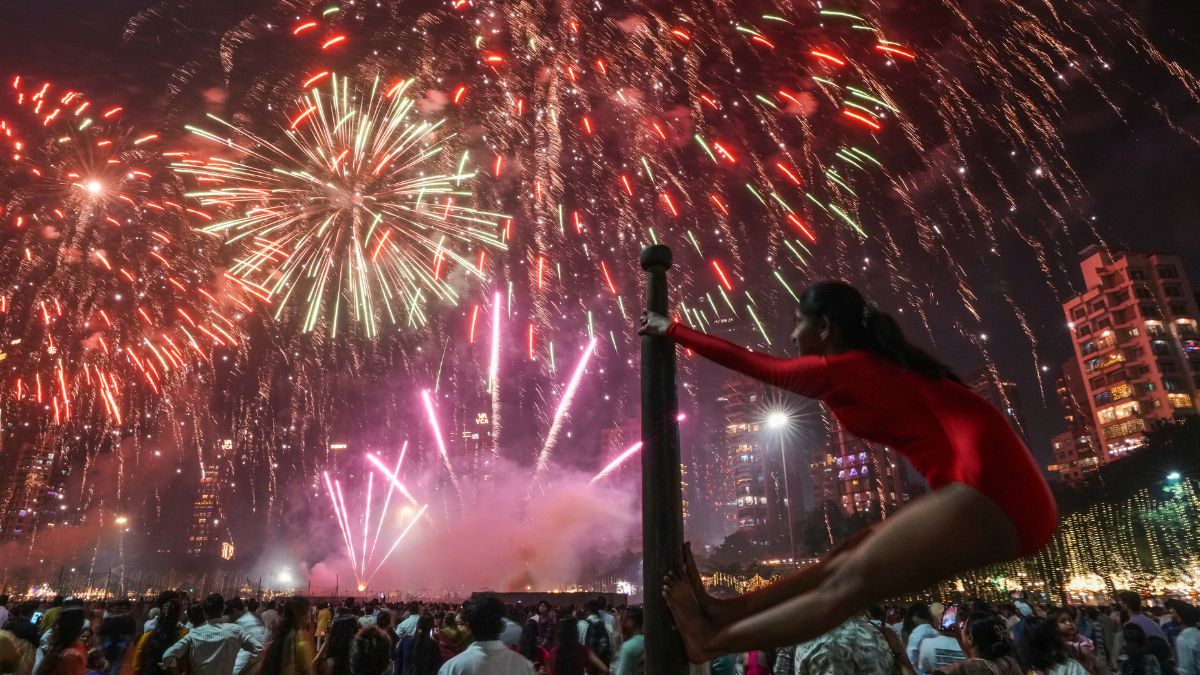Diwali tailwinds: Why post-festive spending will determine true economic health
 A girl performs on a mallakhamb pole as fireworks light up the sky during the festival of lights Diwali in Mumbai, India, on Oct. 20, 2025 | AP
A girl performs on a mallakhamb pole as fireworks light up the sky during the festival of lights Diwali in Mumbai, India, on Oct. 20, 2025 | AP
So far, so good. The Modi government’s gamble of going in for tax cuts just before the festive season kicked off has been a gamble that has paid off spectacularly.
Now comes the harder part.
Will consumer splurging taper off now that Diwali is over, or will it continue in the coming weeks and months, providing adequate tailwind to consumption and thereby giving a fillip to economic growth?
This is crucial, since the larger game plan of the government hinges a lot on this: helping economic activity stay buoyant in the face of any possible geo-strategic uncertainty (read: Trump’s tariff if India doesn’t reach a trade deal soon, and China tightening export controls), as well as perhaps an even bigger objective: make Indian businesses, who have been playing hard-to-get complaining of lack of demand, to venture out and invest in capacity addition, now that the demand is going up.
While GST reforms were long overdue, what brought matters to a head were the chaotic turn global trade and relations took after Donald Trump’s ascension to the US Presidency at the beginning of this year. Trump’s tariff tirades soon put India in a corner, with multiple rounds of trade talks failing to thaw the ice between both countries’ positions.
Trump trouble
That Trump would be a tough cookie was acknowledged just a few days into his presidency, when India’s union budget was unveiled on February 1, seemingly kowtowing to some of his demands. Finance Minister Nirmala Sitharaman also shrewdly unveiled a revision in tax slabs, more than doubling the tax-free exemption to Rs 12 lakh.
That, followed by the simplification of GST rates in September, was aimed at spurring the mass market consumer demand, which had never really recovered from the mortal whammy it got from the Covid Lockdowns. The K-shaped trajectory of the economy since then meant that premium products flew off the shelves as the upper classes came into more wealth; however, when it came to the rural economy, and even more significantly, the urban middle and lower classes, recovery still remained a mirage.
While good monsoons in the last couple of years seemed to signal a revival in rural fortunes, the same was yet to reflect in urban spending – and this is crucial since estimates put 60 per cent of the Indian economy being urban consumption.
Tax cuts and double dhamaka
With global certainties rolling and thundering on the horizon, the Modi government brought out its brahmastra of sorts: tax cuts, and that too, at the advent of the festive season, pushing the consumer to loosen his purse strings at the double dhamaka of lower prices, coupled with additional festive discounts and offers.
While a tapering will be inevitable, you can’t expect urban Indians to shop like Diwali-eve all the time; everything will hinge on how much the spending spree will continue in the coming weeks and months. Until New Year’s, the combo of good weather and a spate of smaller festivals should be able to keep the tills ringing.
And as evinced by the sales notched up by car companies like Maruti whose entry-level cars also flew off the ...er... shelves, a phenomenon not seen during the premiumisation trend of the Post-Covid years, the government expects this will hopefully lead to capacity additions by mass market businesses, thereby returning to a ‘volume-led’ economic growth rather than the ‘value led’ growth seen in the last few years. Reviving the mass market is important because that is where more jobs, investment, and eventually a larger economic growth, can be achieved.
Business